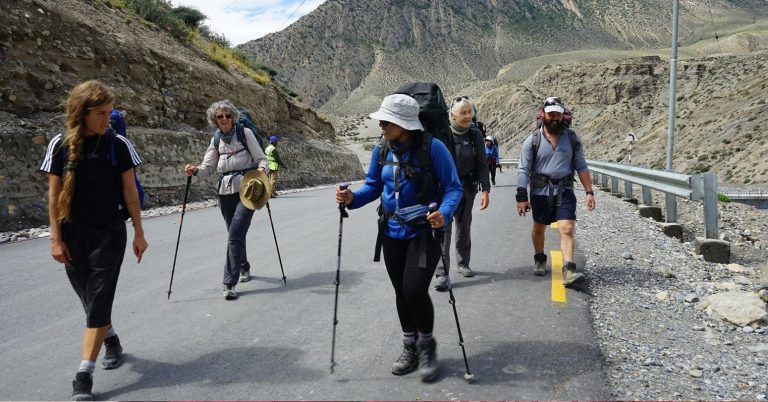Mustang, a scenic district in Nepal’s Himalayas, is seeing a major rise in tourism thanks to smoother road access. The area, known for its rich culture and spiritual sites, is welcoming both local and foreign visitors in record numbers.
The improvement in travel conditions is due to the Beni–Jomsom–Korala national pride project. Newly blacktopped roads between Myagdi and Mustang have made travel to this remote district faster and safer. Tourists now find it easier to reach the region, boosting Mustang’s status as a growing tourism hotspot.
Mustang is famous for its blend of natural beauty and spiritual importance. Every year, thousands of pilgrims travel to visit sacred sites like Muktinath Temple, Kagbeni Dham, and Damodar Kunda. These places hold deep religious value, especially for Hindu and Buddhist visitors.
In addition to spiritual attractions, Mustang offers dramatic landscapes and ancient culture. Tourists enjoy visiting the historic Lo Manthang Palace, scenic Dhumba Lake, and the Ghar Gumba monastery. The villages of Marpha and Jomsom are also popular for their unique charm and local traditions.
Data from the District Police Office shows that 678,536 tourists visited Mustang in the first eleven months of the current fiscal year. This is a sharp rise of 33% compared to 454,326 during the same time last year.
Out of the total, 539,872 were Nepali tourists and 138,664 were foreigners. Last year, Mustang received 354,927 local and 99,399 international tourists. The increase marks a 34.25% jump in domestic travel and a 28.31% rise in foreign arrivals.
Deputy Superintendent of Police Chhiring Kippa Lama shared that November and March were the most active months for Nepali visitors. November brought in 99,176 locals, while March followed with 89,344. For international travelers, the busiest times were May with 28,372 and April with 26,029 tourists.
Many domestic travelers go to Mustang for religious purposes. The Muktinath Temple is a key pilgrimage site. Others come to Kagbeni to perform rituals for their ancestors. Officials say about 25% of these pilgrims go beyond the temple to explore Upper Mustang and the Korala border.
Foreign travelers also show strong interest. Of the international visitors, 80% were Indian nationals. Most of them came for religious reasons. The remaining 20% included people from 72 different countries. This shows that Mustang is becoming well known around the world.
Better roads are a big reason for the growth. Before the improvements, reaching Mustang was hard and time-consuming. Now, the journey is easier, and more people can visit. The word is spreading, too—many travelers are learning about Mustang’s beauty and culture through social media, blogs, and travel videos.
Local businesses are seeing the benefits. Hotels, lodges, and restaurants have more guests. Transport services are also busier. The rising number of tourists is helping the economy in the region.
Authorities hope to keep this momentum going. They aim to maintain the roads and protect Mustang’s cultural and natural treasures. More visitor centers and safety measures are also planned.
Tourism experts say that Mustang could become one of Nepal’s top travel destinations. With its mix of peaceful temples, striking views, and welcoming people, Mustang has something for every kind of traveler.
As access gets easier and more people hear about it, the tourist boom in Mustang is expected to continue growing in the months and years ahead.


